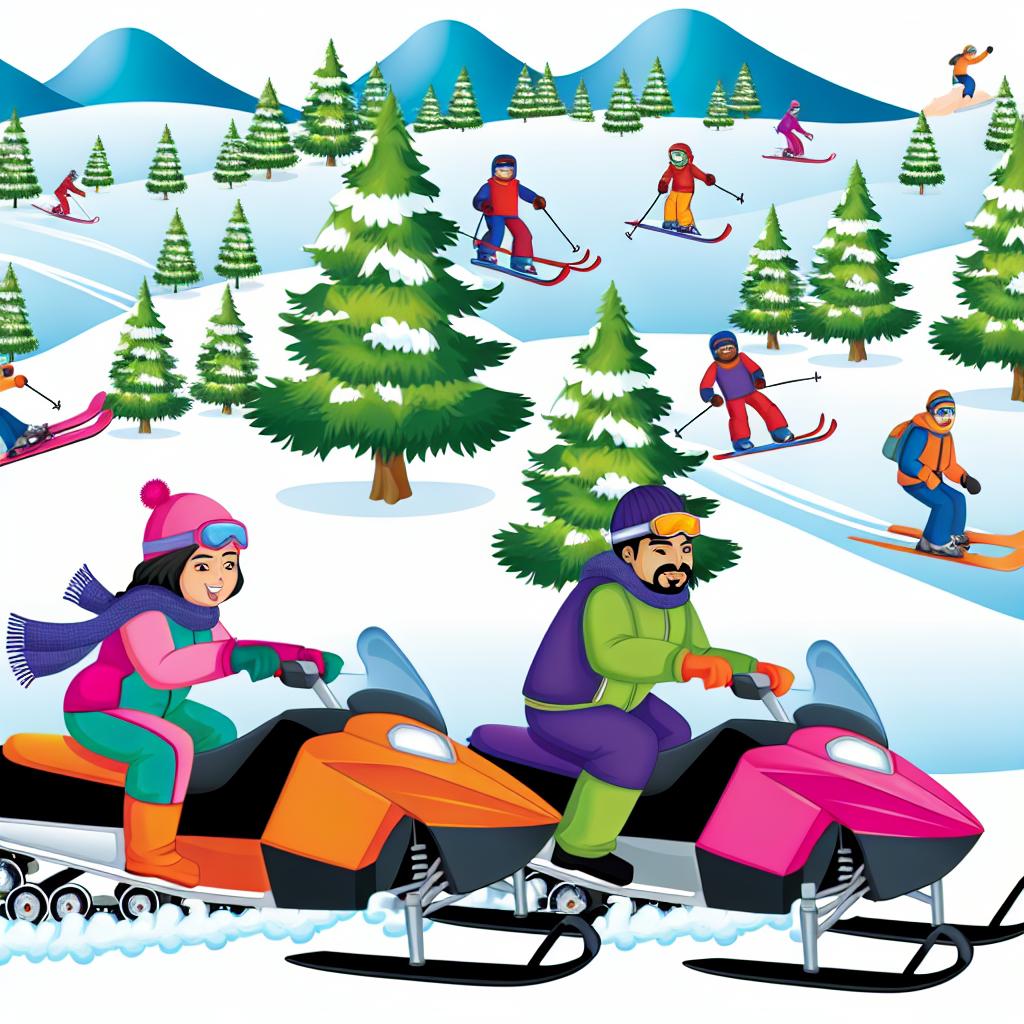The Significance of Snowmobiles in Winter Recreation
Winter recreation has long been a popular pursuit in regions that experience substantial snowfall. Among the various activities that individuals engage in, snowmobiling stands out for several reasons. The use of snowmobiles in snowy landscapes not only provides an exhilarating experience but also significantly contributes to local economies.
Snowmobiles: A Brief Overview
Historical Context and Evolution
The snowmobile, a motorized vehicle designed to navigate snow and ice, has come a long way since its initial development in the early 20th century. Originally created for utilitarian purposes such as delivering mail, transporting medicine, or facilitating winter travel, the snowmobile quickly transformed into a recreational vehicle. The fundamental design—with a track for propulsion and skis for steering—has remained consistent, but technological advancements have led to significant improvements in both performance and safety.
Design and Mechanics
Modern snowmobiles are specifically engineered to enhance the rider’s experience in winter landscapes. Typically, these vehicles range in size and power, from compact models suitable for beginners to more powerful machines designed for experienced riders. The snowmobile’s track provides the traction needed to traverse snow-covered terrains, while the skis offer guidance and directionality. Advances in suspension systems and engine technology have improved ride comfort and fuel efficiency, making them more accessible and appealing to a broader audience.
Economic Impact and Benefits
Direct Economic Contributions
Snowmobiling is a major contributor to the winter economies of snow-prone regions. The industry encompasses the sale, rental, and maintenance of snowmobiles, generating significant revenue within local communities. Retailers supply enthusiasts with a range of snowmobile models, while rental businesses cater to tourists or occasional riders. The financial transactions associated with materials, accessories, and repairs also enhance local commerce.
Boosting Local Tourism
The allure of snowmobiling attracts tourists from various regions, eager to experience the thrill of traversing pristine winter landscapes. Many resorts have tapped into this demand by offering tailored packages that include guided snowmobile tours, allowing visitors to explore scenic routes with the assurance of skilled leadership. This form of tourism is not only appealing to thrill-seekers but also offers an introduction to those unfamiliar with the sport, bolstering visitor numbers during the winter months.
Employment Opportunities
With the rise in popularity of snowmobiling, employment opportunities have expanded in relevant sectors. Local businesses hire staff for equipment sales, repairs, and rentals, while resorts employ guides, instructors, and safety personnel to ensure the well-being of visitors. This seasonal employment is crucial in areas where winter tourism serves as a primary economic driver, providing jobs and supporting the livelihoods of local residents.
Environmental Considerations
Wildlife and Habitat Impact
The operation of snowmobiles in natural areas can potentially disrupt wildlife and their habitats. Animals may exhibit stress responses to the presence of these vehicles, leading to altered behaviors and migration patterns. To address these concerns, snowmobilers are encouraged to remain on designated trails, minimizing the impact on sensitive ecosystems. By adhering to prescribed routes, the interface between humans and wildlife can be managed more sustainably.
Regulation and Policy
Governments and environmental organizations have established regulations to balance recreational activities with ecological preservation. These measures include stipulating trail usage, emissions standards, and conservation zones where snowmobiling may be restricted or prohibited. Through education and enforcement, policymakers aim to ensure that snowmobiling remains a sustainable activity that respects the natural environment.
Innovation and Cleaner Technologies
The snow mobile industry is increasingly adopting cleaner technologies to minimize environmental impacts. Innovations such as electric snowmobiles and efficient fuel systems reduce pollutants, contributing to cleaner, quieter rides. As these technologies advance and become more affordable, their widespread adoption is anticipated to further lessen the ecological footprint of snowmobiling.
Promoting Safety in Snowmobiling
Safety Protocols and Gear
Given the inherent risks of traveling at high speeds over varied terrains, safety is paramount in snowmobiling. Riders are advised to equip themselves with appropriate safety gear, including helmets, goggles, and insulated clothing to protect against the elements. Snowmobiles should be regularly maintained to ensure mechanical reliability, with periodic inspections recommended before every excursion.
Education and Training
Education plays a crucial role in promoting safe snowmobiling practices. Training programs, often offered by snowmobile clubs and regional organizations, provide practical insights into machine handling, trail etiquette, and emergency response procedures. These structured courses help novices learn the basics while offering seasoned riders the opportunity to refine their skills and stay updated on the latest safety developments.
Awareness of Environmental Conditions
Snowmobilers must remain aware of weather and trail conditions, which can dramatically alter the safety of a ride. Checking forecasts and trail reports before heading out can prevent accidents caused by unexpected weather changes or deteriorating snow conditions. In mountainous regions, availing avalanche awareness and preparedness training can be crucial, as knowledge of potential hazards enables life-saving decisions in critical situations.
In conclusion, snowmobiles play a crucial role in winter recreation, offering both thrilling experiences and economic benefits. By practicing responsible usage, riders can enjoy the many advantages of snowmobiling while preserving the pristine winter landscapes. Through a commitment to sustainability and safety, snowmobiling can continue to flourish as a cherished component of winter leisure activities.
